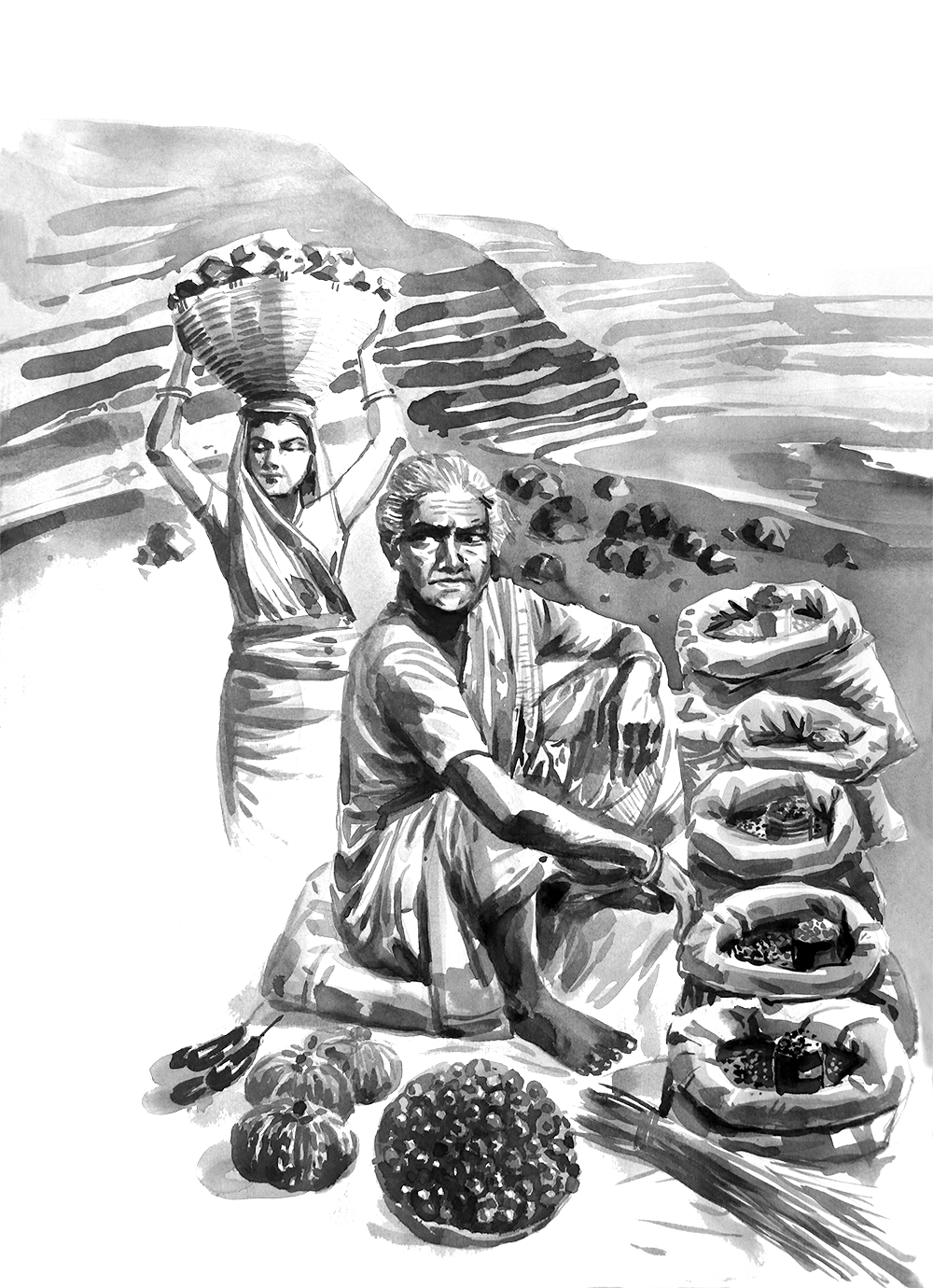
Illustration by: Saheb Ram Tudu
Despite the recognition of Forest Rights Act, 2006, and Panchayat (Extension to Scheduled Areas) Act, 1996 or PESA in Scheduled Areas of India, Adivasis continue to face brutal evacuation due to non-implementation or improper implementation of these constitutional rights. Non-recognition of Community Forest Resources (CFR) rights, uncertain rainfall, and an overall decline in agricultural output negatively impact the Adivasi peasant economy. Taking away Adivasis’ self-reliance and sense of identity limits Adivasisʼ options to choose, forcing them to take up low-paying jobs, migrate, and for women to work as domestic workers or even get trafficked. None of these come with any sense of security and safety, from financial to physical and mental well-being.
The resistance movements often come with a sense of helplessness as people in power keep getting away with false solutions and greenwashing. Even peaceful agitations, documentation, and virtual engagement come with constant anxiety as Adivasis continue to face the most brutal form of state oppression due to the imposed identity as a Naxalite which has been generalised to all Adivasis and Adivasi regions. Raising a voice has harsh consequences for Adivasis, who lack the social and economic capital to safeguard themselves. Amidst this, as vocal young Adivasi, we constantly negotiate between the fear of losing our land, culture, and language and the fear of being falsely incriminated and harassed by the oppressors, in real-time as well as on social media, for speaking up.
In the larger discourse, we face constant epistemic exploitation. The act of reliving our inter-generational traumas, and the responsibility to educate the privileged person about the nature of their oppression falls on us. Berenstain points out how epistemic exploitation results in unrecognised, uncompensated, emotionally taxing, and coerced epistemic labour. It’s tiring to stand in front of your oppressors and explain what is missing and wrong with the narrative. Under their (upper) caste and euro-western gaze, we have to face gaslighting and skepticism that results in overwhelming exhaustion, with little to no emotional support circles.
Most learning and unlearning by privileged people are limited in theory and not extended in action when implementation and recognition of Adivasi rights are demanded. We are handed token representations, while we demand radical system change, within which the Adivasi voices are expected to be the perfect victims of oppression that takes away our chance at humanising ourselves away from the oppressors’ lens. This imperialising, hegemonising lens on Adivasi identity is imposed externally as well as internally, as we often forget that identities are fluid and are subject to the continuous ‘play’ of history, culture, and power. This often leads to immense self-doubt, lack of confidence, and the sense of never being enough despite constantly and critically engaging with Adivasi discourses.
Self-care amidst all this becomes a protest against the traumatic colonial, casteist, classist, and capitalist experiences we go through while reclaiming our rights to “Jal-Jungle-Jameen”, Adivasi knowledge and belief systems. Though even the protest, in its most literal sense, is a privilege reserved for people of certain caste, class, gender, race, and religion.






















